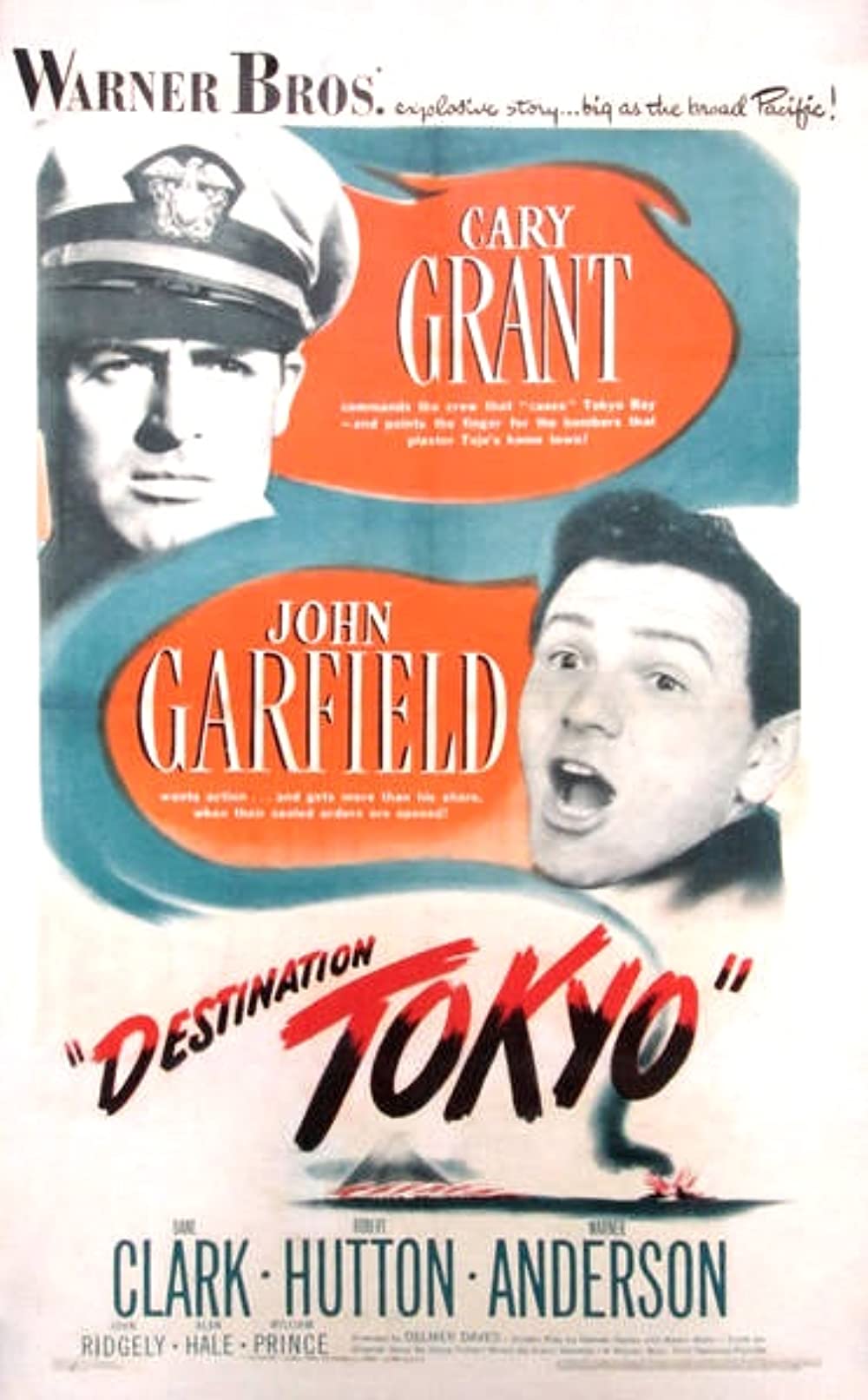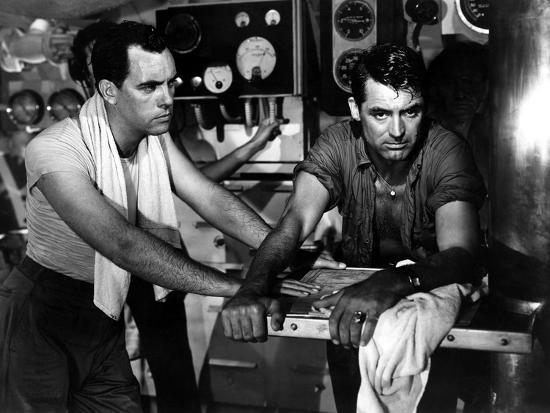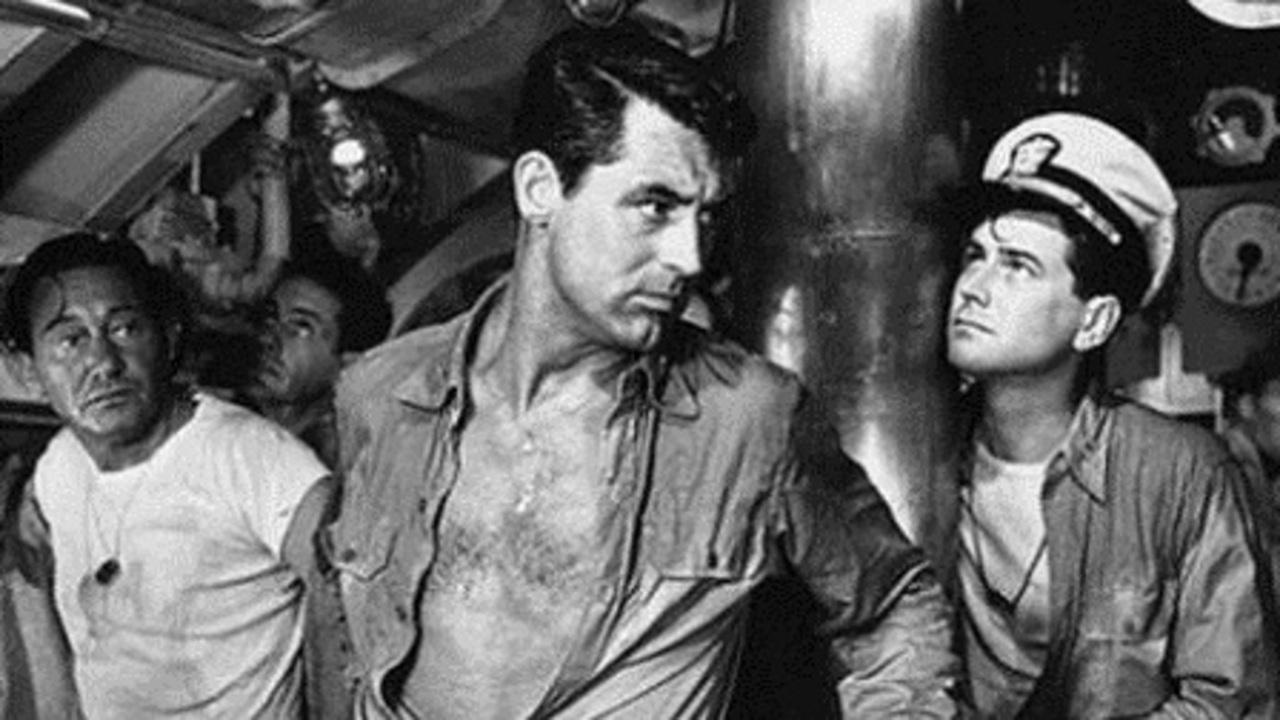An obvious WW2 propaganda movie made back in 1943 with full blessings of the Navy Department. This Cary Grant flick falls flat on its face by today’s standards for its lack of realism and heavy-handed exposition. Written by (also the director) Delmer Daves and Albert Maltz from a story by Steve Fisher.
The crew of the submarine USS Copperfin helmed by Capt. Cassidy (Cary Grant) is portrayed as a group of happy and patriotic sailors doing their duty against the Japanese. So far so good.

But this 134 minute film spends an inordinate amount of time on “character development” as we watch scene after scene of young sailors share their fears, dreams, and stories of masculine conquest, even though all that development ends up nowhere and never intersect with the main plot line: preparing the ground work for the upcoming Doolittle air raid on Tokyo. John Garfield, playing the “Wolf” character named after the way he pursues girls, gets considerable screen time although he is clearly a secondary character.
Watch Destination Tokyo (1943) Trailer:
There is ample patriotic lecturing by Cary Grant about America’s role in the war and the necessity of finishing off the Japanese military machine. Today such ham-fisted exposition would never survive the editing of the story department.

Despite several battle sequences (attacked by Japanese planes, bombed by depth charges, etc.) we are never at a loss about the eventual outcome. There is no mystery and no unknowns. No plot twists or turns. As in all propaganda films, we know for sure that USS Copperfin will survive every challenge without a sweat, and that’s what precisely happens. There are no moral, personal or political complications in this open-and-shut black-versus-white cookie cutter “war is fun” movie.
The only redeeming value of this film is Grant’s hypnotic good looks and graceful well-paced acting. That’s what keeps the whole thing together.


















































